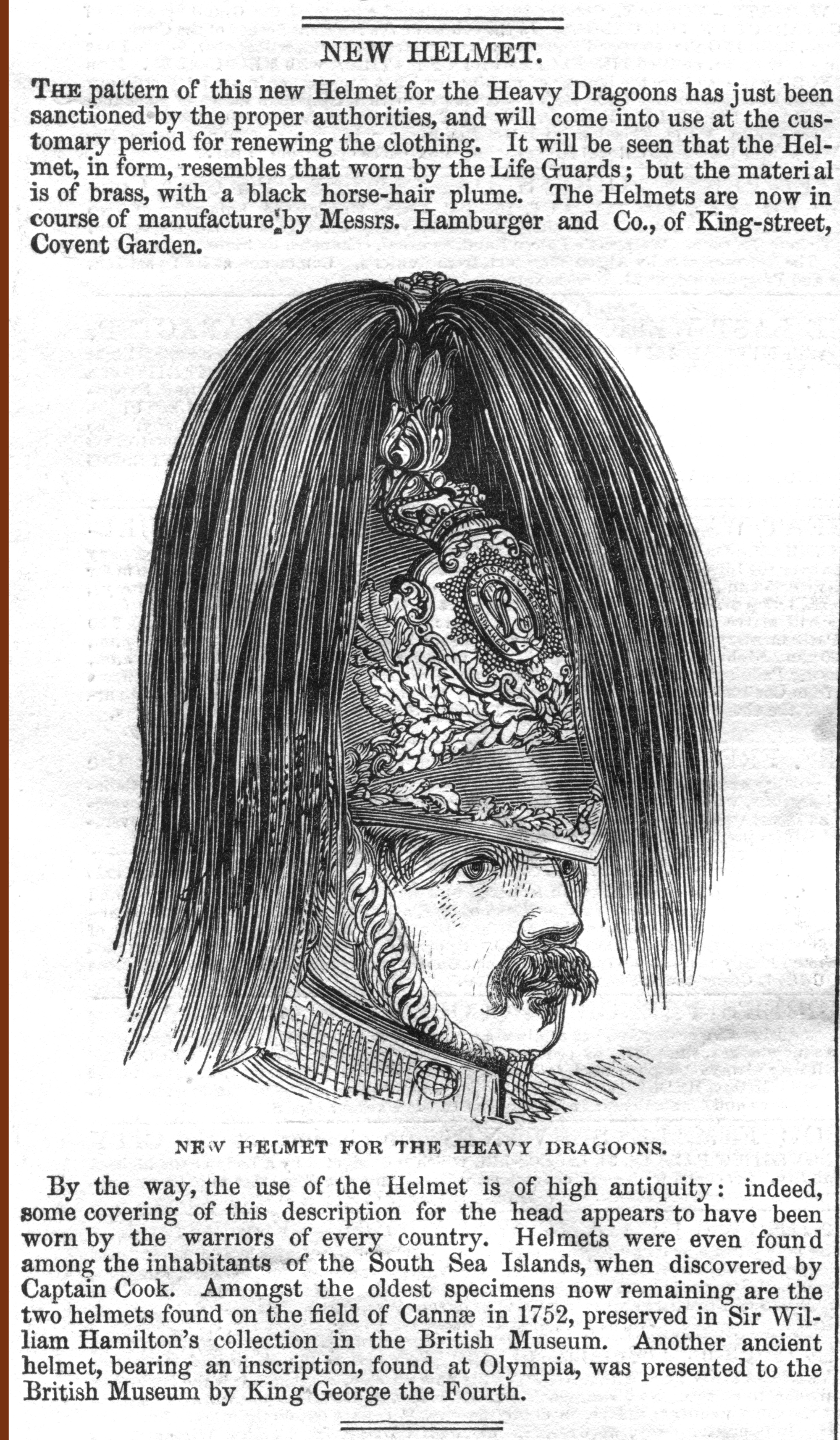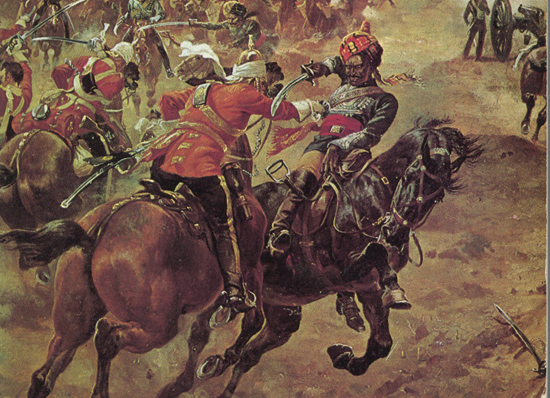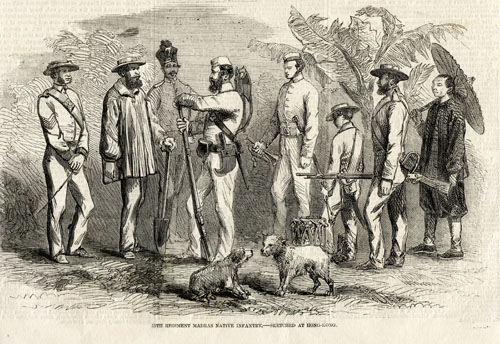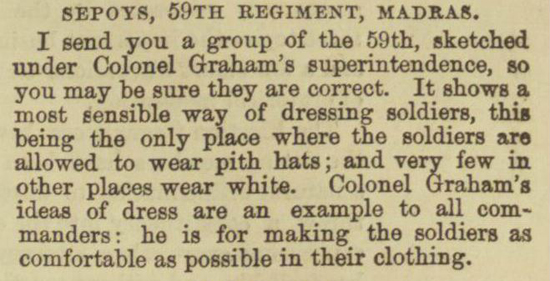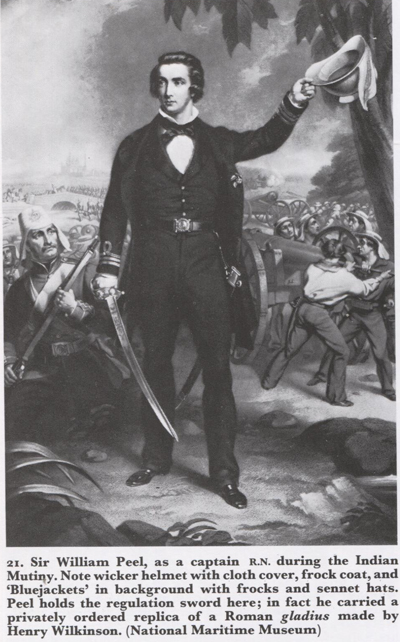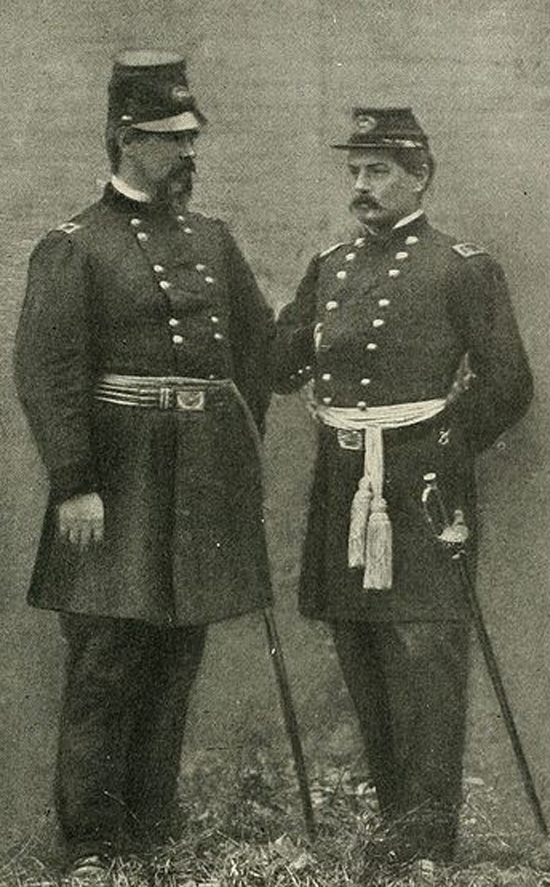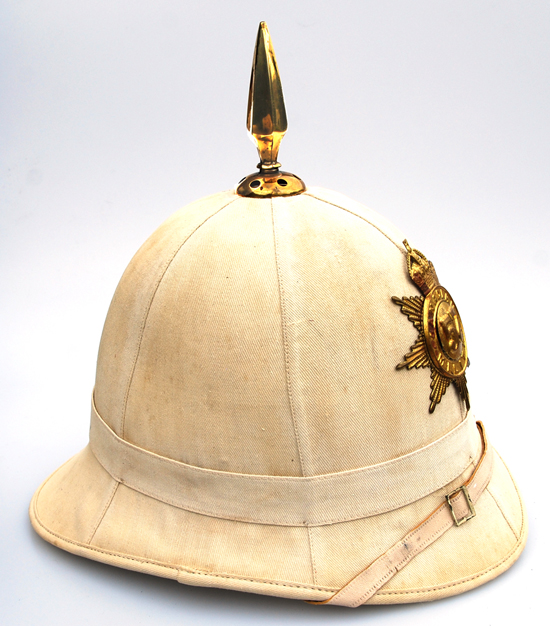 Figure 1. Top left, an Ellwood & Sons ‘Air Chamber’ military sun helmet, patented 1851, following traditional Indian designs it has a light weight cork construction, is cloth covered and has an ‘air pipe’ comb allowing air to freely circulate in the dome. Top right, a ‘Custodian’ police helmet by Christys & Co ltd (1952), uses almost identical construction methods; a version of this basic design was introduced in 1863 and was the only Custodian type for at least 10 years. Bottom left, a development of the sun helmet; a Christys & Co Ltd, late 1800s Colonial Pattern Sun Helmet. Bottom center, the attached Christys label. Bottom right, a near identically constructed police helmet, again by Christys, offered to the police as an alternative ‘Custodian’ style in the mid 1870s.
Figure 1. Top left, an Ellwood & Sons ‘Air Chamber’ military sun helmet, patented 1851, following traditional Indian designs it has a light weight cork construction, is cloth covered and has an ‘air pipe’ comb allowing air to freely circulate in the dome. Top right, a ‘Custodian’ police helmet by Christys & Co ltd (1952), uses almost identical construction methods; a version of this basic design was introduced in 1863 and was the only Custodian type for at least 10 years. Bottom left, a development of the sun helmet; a Christys & Co Ltd, late 1800s Colonial Pattern Sun Helmet. Bottom center, the attached Christys label. Bottom right, a near identically constructed police helmet, again by Christys, offered to the police as an alternative ‘Custodian’ style in the mid 1870s.
Category Archives: Indian Mutiny
Helmets are not new under the Sun
One of the great mysteries regarding the origin of the classical “colonial pattern” sun helmet is how it obtained its distinctive shape, one that was truly of Anglo-Indian origin, but which was copied throughout the world. Continue reading
Full and Undress Headgear in India
During the Indian Mutiny both Full Dress and Undress headgear was worn. Cavalry, as shown above, initially adopted a turban wound around the base of the metal helmets but how effective this was is debatable. Infantry soon adopted the Havelock cover, named after its creator Major General Henry Havelock, which covered both the cap/shako and included a neck curtain. Cavalry soon adopted a full quilted cover. Continue reading
The 59th Regiment Madras Native Infantry
The above illustration, from the Illustrated London News, July 1857, piqued my interest because my main area of collecting is British military headdress; however that soon became of lesser importance. The above engraving is captioned “59th Regiment Madras Native Infantry – Sketched at Hong Kong” and its accompanying text states –
Sun Helmets in the Royal Navy
Although not officially established as part of a tropical uniform for officers until 1885, the sun helmet was used unofficially as far back as the Indian Mutiny (1857-1858). It was described as being a “white helmet with blue pagri.” 1 Continue reading
The Mysterious Helmet of General Irvin McDowell
While it is widely accepted that the sun/pith helmet most certainly originated in India, it remains a point of conjecture whether the sun helmet traveled not to Europe but to America, where it found its way to the first battlefields outside of the Indian subcontinent during the American Civil War.
Some sources suggest that the 4th New Hampshire Infantry may have worn a “pith helmet” or sun helmet to protect the soldiers from the intense southern sun during its campaigns in Florida, but what remains much more of a mystery is exactly what Brigadier General Irvin McDowell (above left with General George McClellan) may have worn at the Battle of Bull Run – the first major engagement of the war between the states. Continue reading
Straight to the Point: The History of the Spiked Helmet
Many colonial pattern sun helmets featured a spike at the dome, a feature reminiscent of the German “Pickelhaube” (Pointy Hat). This traditional of wearing a spike is one that appears to originate in the 1840s, and while a helmet with a spike on top is traditionally associated with Prussia and later Germany, the truth is that many nations including the United States, Great Britain, Portugal, Spain, Norway, Sweden and Chile all were among those that utilized the decorative spike. Continue reading

